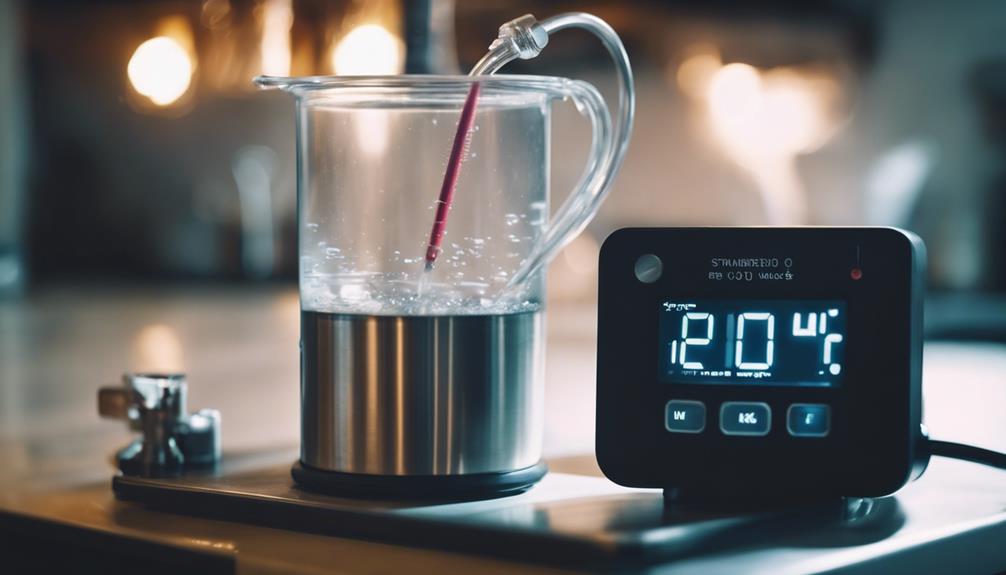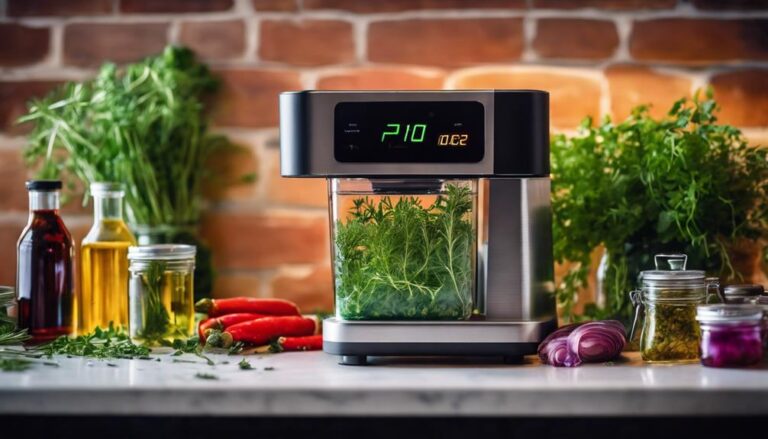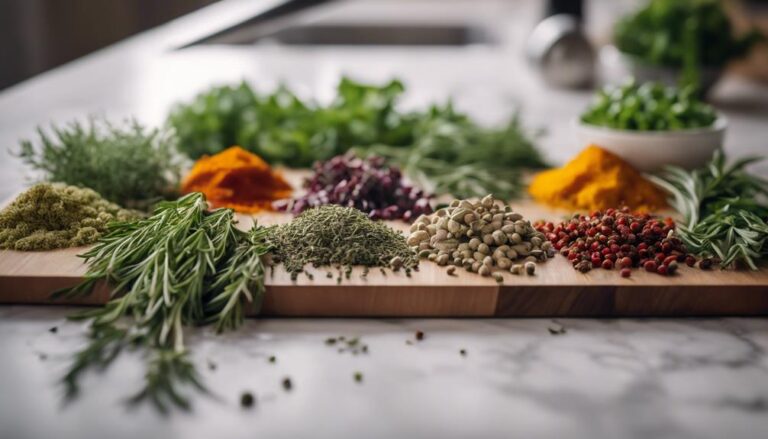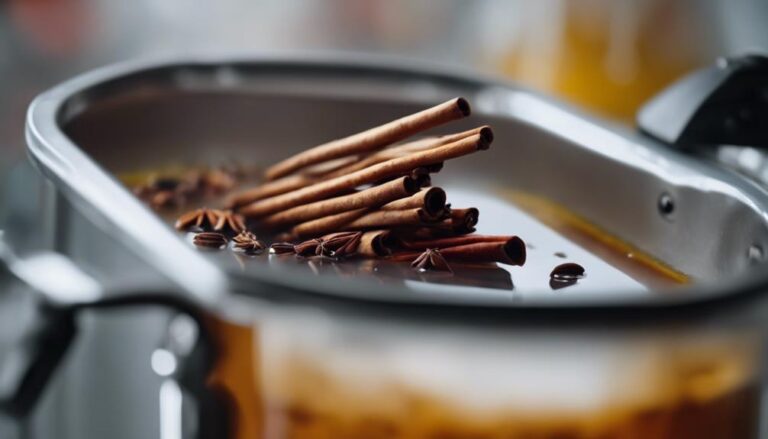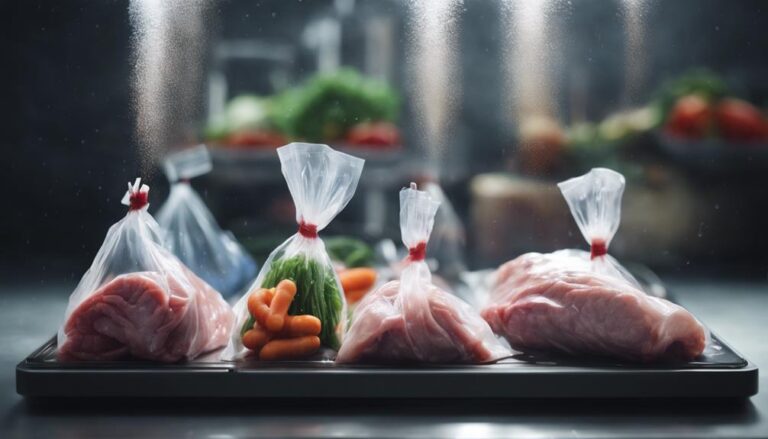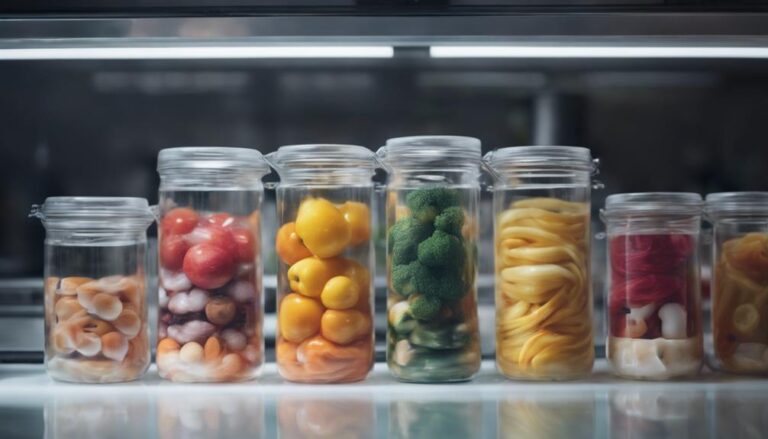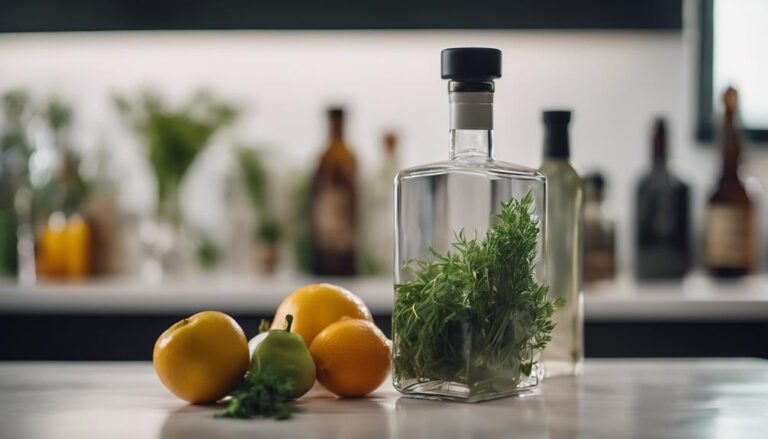Precision Matters: How Temperature Affects Sous Vide Cooking
In sous vide cooking, temperature precision is vital for perfect dishes. Consistent results and desired texture hinge on accurate cooking. Different meats require specific temperatures for ideal doneness. Temperature directly impacts tenderness, juiciness, and flavor. It's important to elevate your dishes. Keep in mind, small temperature shifts can impact outcomes. Mastering temperature control in sous vide guarantees culinary delight in each bite.
What You Will Learn Here
- Temperature control crucial for precise sous vide results
- Consistent texture and doneness linked to accurate temperatures
- Minor adjustments impact tenderness and juiciness significantly
- Proper monitoring ensures edge-to-edge cooking perfection
- Precision in temperature elevates flavors and textures
Importance of Temperature Control in Sous Vide
Why is precise temperature control important in sous vide cooking?
When it comes to sous vide, temperature control is the cornerstone of achieving perfection in your dishes. Precision cooking through maintaining a constant temperature is essential for consistent results, ensuring that your food reaches the desired level of doneness and texture every time.
Sous vide machines play an important role in this process, allowing you to set exact temperatures with ease.
Texture Impact of Temperature Variation
Maintaining precise temperature control during sous vide cooking greatly influences the texture of the food, particularly in controlling the doneness level. When it comes to sous vide cooking, the temperature impact on texture is essential for achieving the desired outcome.
Here's how temperature influences the texture of your sous vide dishes:
- Tenderness: The level of tenderness in your food is directly linked to the temperature at which it's cooked. Higher temperatures can result in a firmer texture, while lower temperatures produce a more tender bite.
- Juiciness: The juiciness of your food is dependent on the temperature control during cooking. Proper temperature management ensures that the natural juices of the ingredients are retained, enhancing the overall flavor and moisture content.
- Small Adjustments: Even minor temperature adjustments can lead to significant changes in the texture of the final dish. Paying close attention to temperature fluctuations can help you achieve the perfect texture every time.
Doneness in Sous Vide Cooking

When cooking sous vide, achieving perfect doneness every time is all about understanding temperature control precision.
Consistent texture results are directly linked to the temperatures you set for your sous vide cooking.
Perfect Doneness Every Time
Achieving perfect doneness every time in sous vide cooking is a direct result of precise temperature control throughout the cooking process. When serving others, you want to guarantee that each bite is just right.
Here's how you can achieve perfect doneness consistently:
- Precise Temperature: Set the sous vide machine to the exact temperature required for the desired level of doneness.
- Edge-to-Edge Cooking: With sous vide, the entire cut of meat cooks uniformly, assuring no part is under or overdone.
- Consistent Results: Sous vide ensures that whether you prefer rare or well-done, each serving will be consistently perfect.
Temperature Control Precision
For consistent and precise results in sous vide cooking, focus on controlling the temperature with utmost accuracy. Sous vide cooking relies on temperature control down to 0.1°F to guarantee the perfect doneness of your food.
The precision in temperature regulation guarantees a consistent texture and tenderness in your dishes. Even small variations in temperature can have a substantial impact on the final outcome, making temperature control throughout the cooking process vital.
Consistent Texture Results
To guarantee consistent texture results in sous vide cooking, maintaining precise temperature control is paramount. Here's why it matters:
- Achieving specific levels of doneness: Sous vide allows you to cook your food to perfection, whether you prefer rare, medium-rare, medium, or well-done.
- Uniform cooking from edge to edge: With sous vide, your food is evenly cooked throughout, ensuring every bite is just as tender as the last.
- Temperature accuracy for the perfect texture: The precision of the temperature directly impacts the final texture and tenderness of your dish, making every sous vide creation a masterpiece.
Quality of Sous Vide Meat
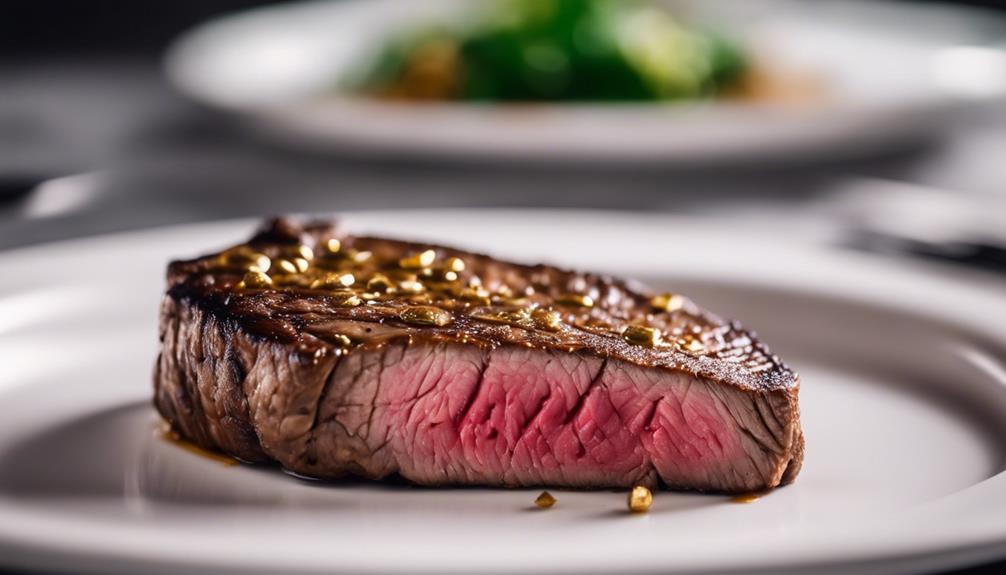
When discussing the quality of sous vide meat, it becomes evident that precise temperature control plays a pivotal role in ensuring consistently tender and juicy results. Sous vide cooking method excels in providing edge-to-edge cooking, optimizing texture, flavor, and customization of meat doneness levels. The controlled environment of sous vide also aids in retaining up to 30% more moisture in the meat compared to other cooking methods. This results in succulent and flavorful dishes that are sure to impress those you serve.
| Key Benefits of Sous Vide Meat Quality |
|---|
| Even cooking from edge-to-edge |
| Moisture retention up to 30% more |
| Customization of meat doneness levels |
Incorporating sous vide into your cooking routine guarantees that each bite of meat is perfectly cooked to your desired level of doneness, with unparalleled tenderness and juiciness. The precision offered by sous vide technology elevates the quality of your dishes, promising a memorable dining experience for your guests.
Monitoring and Adjustment in Sous Vide
Ensuring accurate temperature monitoring and adjustments is vital to mastering the art of sous vide cooking for best results. To achieve this, follow these essential steps:
- Utilize Probes: Use probes to precisely monitor the temperature of the water bath, guaranteeing the food is cooked at the desired temperature throughout the sous vide process.
- Make Timely Adjustments: Small temperature adjustments can greatly impact cooking times in sous vide. Regularly monitor and adjust the temperature to achieve precise results and desired doneness.
- Understand Thermal Diffusion: Understanding thermal diffusion is essential for making precise adjustments during cooking. This knowledge helps in maintaining consistent temperatures and ensures the quality of the final dish.
Achieving Consistent Sous Vide Results
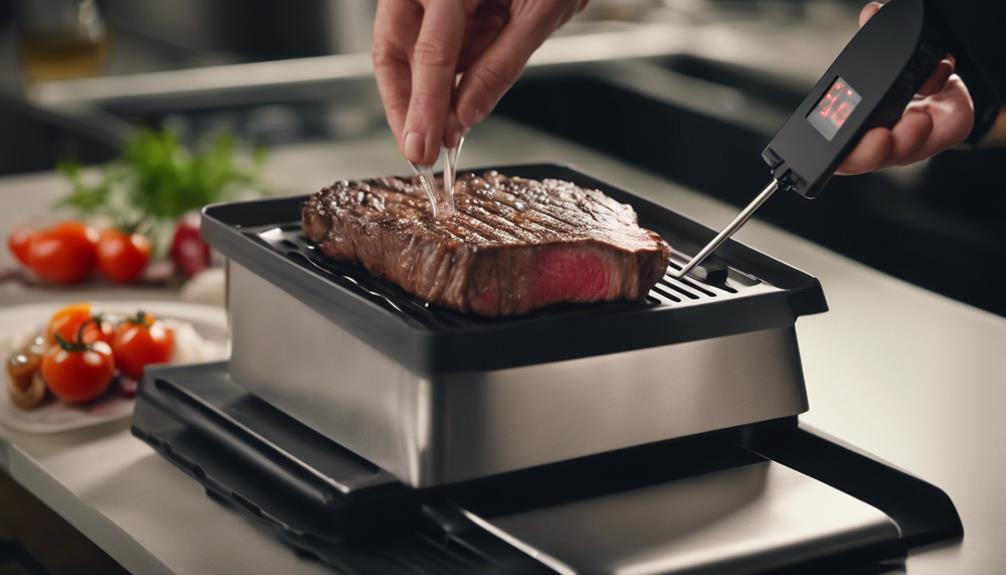
To achieve consistent sous vide results, you need to focus on maintaining precise temperature control throughout the cooking process.
Even small fluctuations in temperature can impact the final texture and doneness of your food.
Temperature Precision Importance
Why is temperature precision essential in achieving consistent sous vide results?
Maintaining accurate control over the water bath temperature is vital for ensuring that your food cooks evenly and reaches the desired level of doneness.
Here are three reasons why temperature precision matters in sous vide cooking:
- Consistent Results: Small variations in temperature can have a significant impact on the final texture of your food.
- Even Cooking: Precise water bath temperatures guarantee that your food cooks uniformly from edge to edge.
- Reliable Outcomes: Sous vide machines like Anova provide accurate temperature control within 0.1°C, leading to consistent and predictable results every time.
Understanding the influence of temperature on cooking times is essential for achieving perfect sous vide dishes.
Time and Accuracy
Achieving consistent sous vide results relies heavily on both precise timing and accuracy in maintaining water bath temperatures. In sous vide cooking, precision is essential to ensuring that your dishes turn out perfectly every time. By controlling the cooking times and temperatures with accuracy, you can guarantee consistent results and achieve the desired level of doneness in your food.
It's vital to monitor the temperature closely throughout the cooking process to avoid any fluctuations that could affect the outcome. The reliability of sous vide cooking lies in your ability to maintain the set temperatures accurately and follow the recommended cooking times diligently. By prioritizing time and accuracy in your sous vide preparations, you can elevate your culinary creations to new levels of perfection.
Precision in Sous Vide Cooking
Maintaining a consistent temperature throughout the sous vide cooking process is essential for precision in achieving desired results. When focusing on precision in sous vide cooking, consider the following:
- Control Over Doneness: Sous vide cooking allows you to precisely manage how cooked you want your food to be, guaranteeing it reaches the exact level of doneness you desire.
- Tenderness and Moisture Retention: By maintaining a consistent temperature, sous vide cooking helps preserve the natural juices and moisture of the food, resulting in tender and succulent dishes.
- Flavor Enhancement: The even cooking provided by sous vide techniques ensures that flavors are evenly spread throughout the food, enhancing the overall taste experience.
When aiming for precision in sous vide cooking, remember that temperature control is key to achieving the perfect dish every time. By paying attention to these details, you can serve dishes that aren't only cooked to perfection but also bursting with flavor and moisture.
Temperatures Role in Sous Vide

Temperature control plays an essential role in sous vide cooking for achieving precise and consistent results. In sous vide cooking, different temperatures are utilized to cook various types of meat to specific levels of doneness. Sous vide machines are indispensable as they maintain a constant water temperature, ensuring that the food is cooked evenly throughout. The water temperature directly influences the texture, tenderness, and flavor of the final dish, highlighting the importance of precise temperature control in sous vide cooking. By understanding the recommended cooking temperatures for different foods, you can master the art of sous vide cooking and elevate your dishes to new levels of quality and taste.
| Aspect | Impact |
|---|---|
| Texture | Directly affected by temperature control, leading to desired consistency. |
| Tenderness | Controlled temperatures result in perfectly tender meat. |
| Flavor | Ideal water temperature enhances the flavors of ingredients. |
Mastering the cooking temperatures in sous vide cooking allows you to achieve precision in your dishes, ensuring that every bite is a culinary delight.
Frequently Asked Questions
What Is the Best Temperature for Sous Vide Cooking?
For the best sous vide cooking, remember the magic number: it all depends on what you're cooking! Different cuts of meat and proteins shine at specific temps. Embrace precision for tastier, juicier outcomes!
Is It Safe to Sous Vide at 135?
Yes, it's safe to sous vide at 135°F for pasteurization. For best food safety, follow recommended cooking times. Maintain precise temperature control with accurate equipment and thermometer calibration. Enjoy enhanced flavor profiles and perfect texture with sous vide cooking at 135°F.
Why Do Sous Vide Cooking Times Vary so Much?
Sous vide cooking times vary due to factors like ingredient selection, texture preferences, and heat distribution. Understanding these variables is essential for achieving precise results and ensuring food safety. Selecting the right cooking equipment and techniques enhances flavor profiles.
What Temperature Does Collagen Break Down Sous Vide?
When collagen breaks down in sous vide, temperatures between 122-140°F start the process, but for perfect tenderness, aim for 160-180°F. Temperature control creates ideal texture changes, protein denaturation, and flavor development for succulent results.
Conclusion
So, remember, when it comes to sous vide cooking, precision matters. Temperature control plays an important role in determining the texture, doneness, and overall quality of your dish.
By monitoring and adjusting the temperature carefully, you can achieve consistent and delicious results every time.
Don't overlook the significance of precision in sous vide cooking – it can make all the difference in creating a perfect meal.
